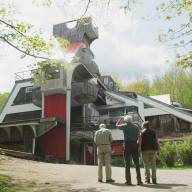Water is life, as the saying goes and that’s never more clear than when you’re in the middle of a prolonged drought.
Local fire chiefs, state officials and national forest officials have banned burning and burning remains prohibited because even this week’s rain was not enough to penetrate the dry layers of the ground or provide any significant refill for high elevation tributaries and lower brooks and the Mad River.
But it’s not just fires. People’s wells and springs are failing. Wetlands are desiccated. Ponds are dried up and it’s damn dusty everywhere. Take a nice long walk on one of our beautiful dirt roads to enjoy foliage season and expect to return covered in dust from feet to face.
On Tuesday morning, September 23, the USGS stream gage at Moretown showed a flow of 14 cubic feet per second, which was lower than the previous historic low flow of 17 cubic feet per second in 1963. For data nerds, the maximum historic stream flow at that gage was 1330 cubic feet per second in 1930. The median stream flow at that site is 55 cubic feet per second.
How much will it take to get out of this drought? A lot of rain – somewhere between four and seven inches of continuous rainfall according to Vermont media reports.
That’s so much rain that it would have its own unwelcome and destructive consequences. It’s a hard balance. It’s been great to have dry weather to play outside for much of the summer, especially after such a wet spring. But there’s a price to pay, and we’re paying it now.
Here’s hoping people’s wells and springs make it through and that local firefighters can find and access water to do their work when needed.
You might also like












